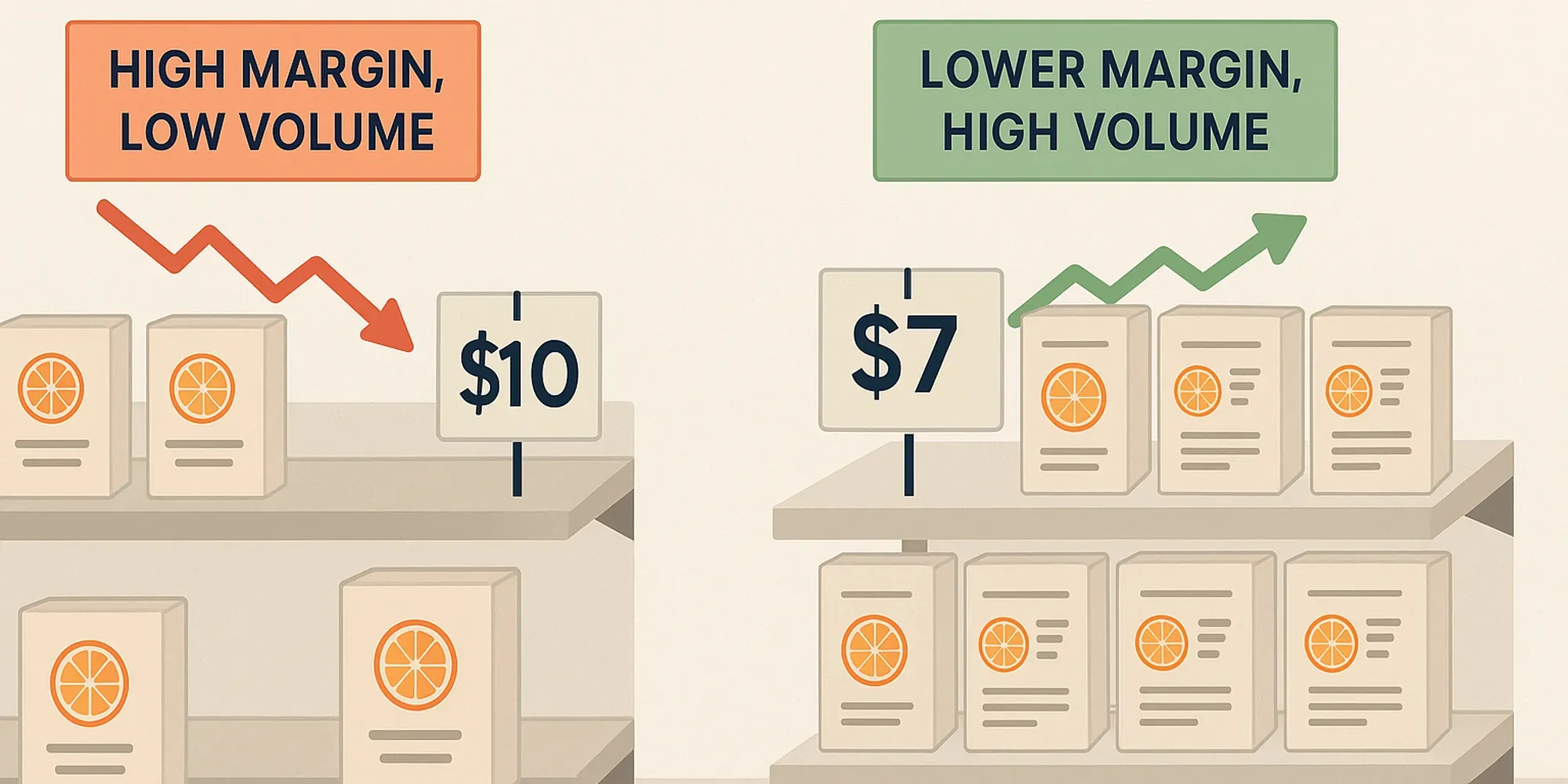The Truth About Margins in Food: It’s a Volume Game

When you're building a food brand, it’s easy to fall into the trap of chasing big margins on every product.
That was one of the biggest mistakes I made when scaling my own food brand.
We thought a high per-unit profit meant we were building a healthy business. What we didn’t realise? We’d priced ourselves out of the volume we actually needed to succeed.
Why a High Margin Isn’t Everything
Let’s break it down with a simple example.
Imagine your fixed costs (rent, salaries, utilities, etc.) are $50,000/month.
These don’t typically change whether you sell 10 units or 10,000.
Now let’s look at a product with a COGS of $3.
Scenario 1: High Margin, Low Volume
You aim for a 50% margin, so your RRP ends up around $10.
You sell 10,000 units, earning $30,000 in gross margin.
But your fixed costs are $50k — so you're still losing $20k.
Scenario 2: Lower Margin, Higher Volume
You reduce your margin target to 30%, pricing your product more competitively.
This helps you sell 50,000 units, generating $64,500 in gross margin.
Your fixed costs are still $50k — so now you're $14,500 in profit.
And that’s before you even account for:
- Better buying power on ingredients
- Freight and packaging efficiencies
- Operational scale savings
Food Is a Volume Game
Profit in food manufacturing doesn’t come from maxing out margin on every unit.
It comes from hitting the volume needed to absorb your fixed costs — and grow from there.
Yes, you’ll still need to account for specials, trade deals, and wholesale pricing. But the big picture is clear: you need to get the numbers moving, not just the margin.
Plan for Your Real Numbers
We’ve built some free tools to help you play this out with your own products:
Try the Supply’d Margin Calculator and Profitability Planner
Use them to map out different pricing and volume strategies — and see how they impact your bottom line.
Final Thought
Big margins feel good on paper. But cash in the bank comes from volume.
Make sure your pricing strategy is working for your scale, not against it.
If you’re not sure where to start, try our margin tools — they’ve helped a lot of founders get clarity on what really moves the needle.
Explore the tools now →
Don't know your real margins? You should book a demo for Supply'd.

